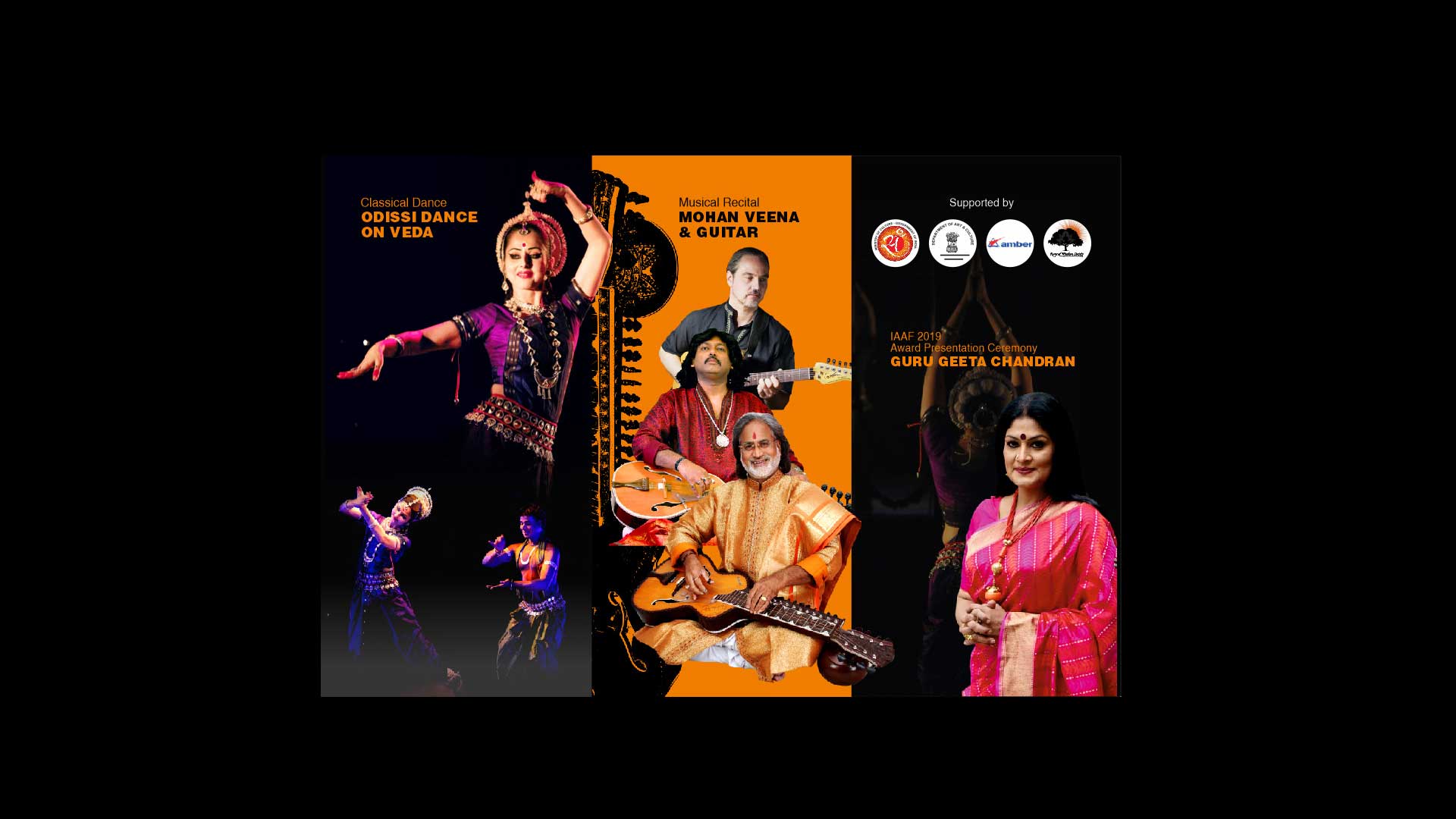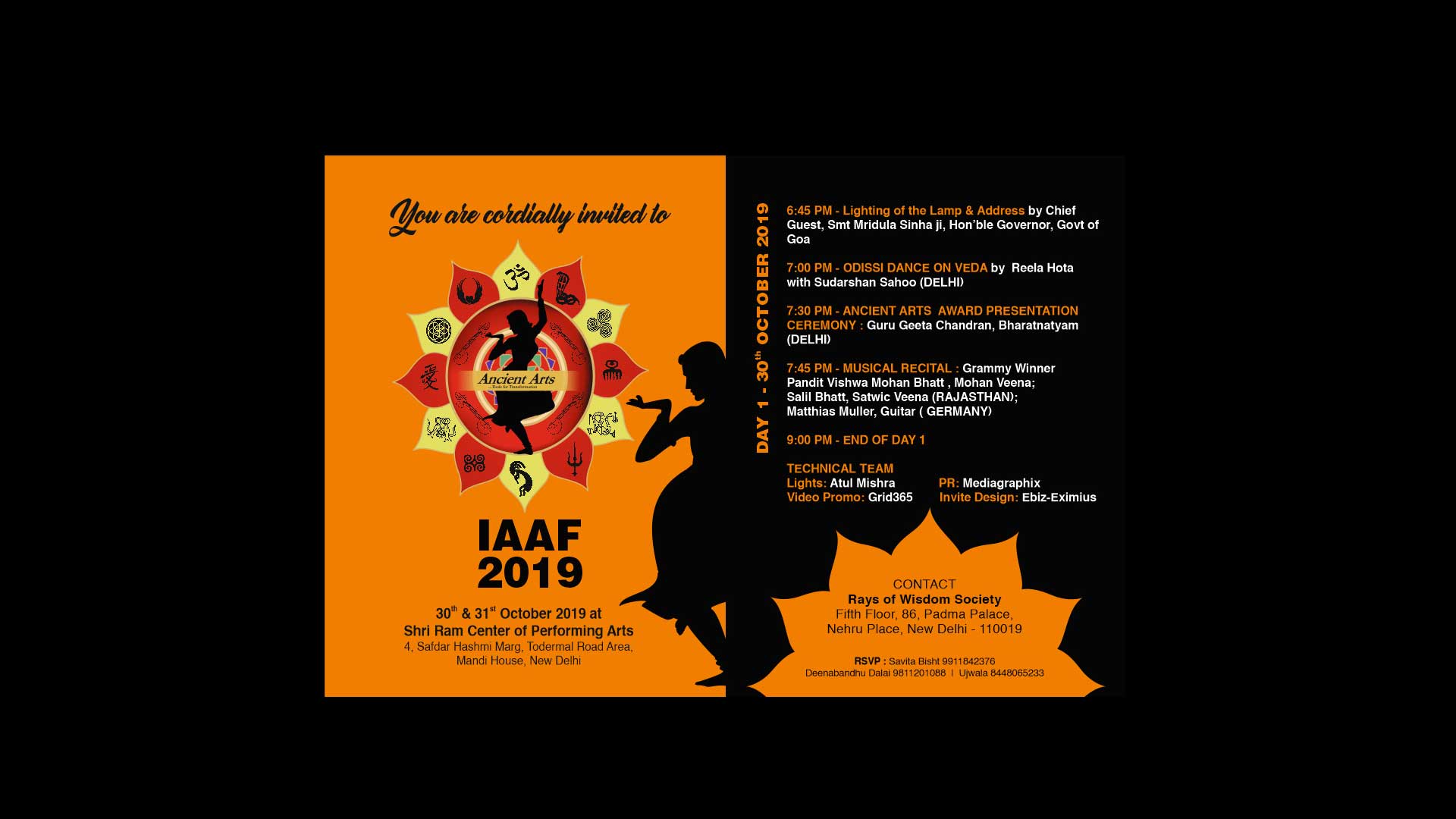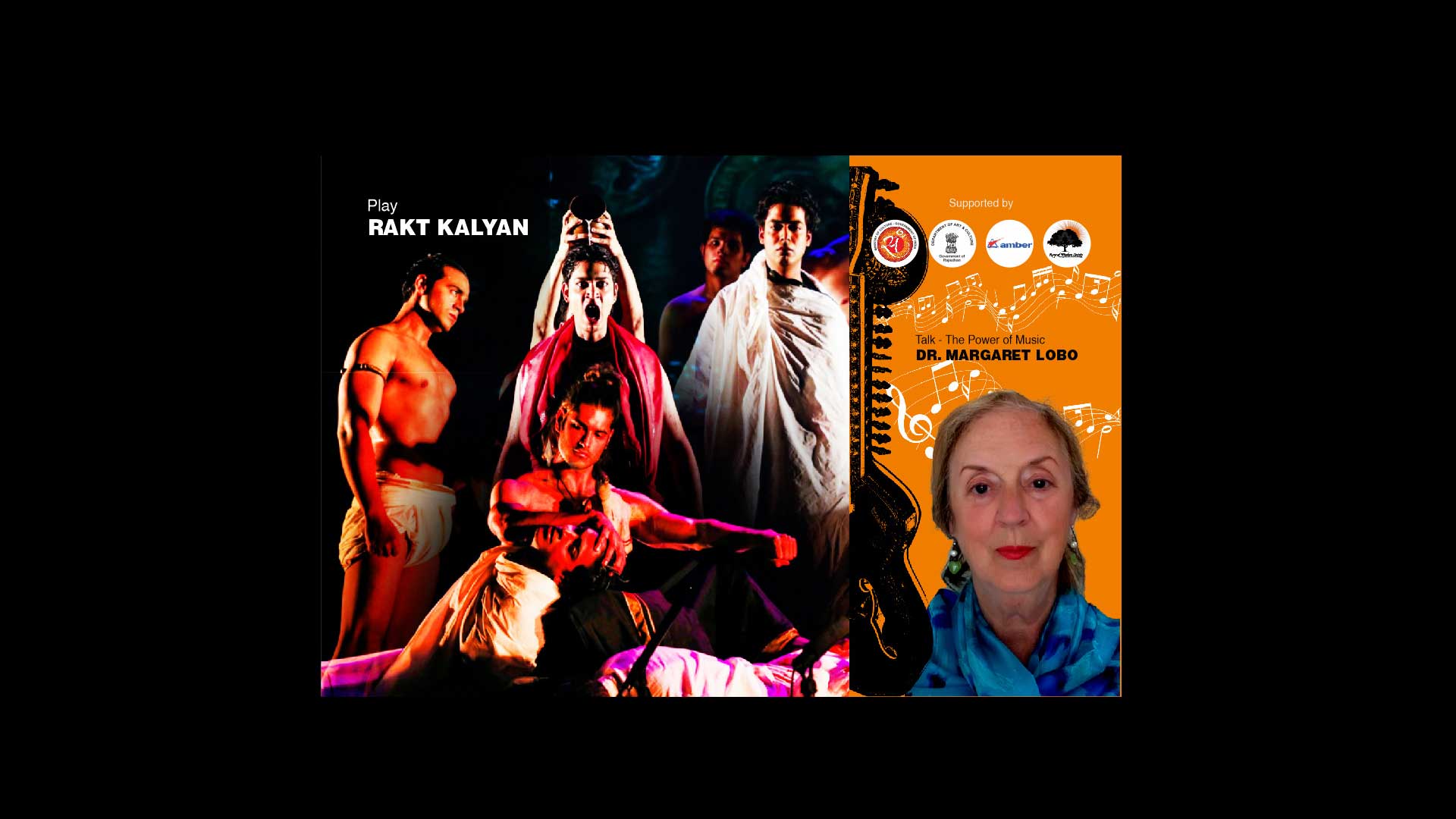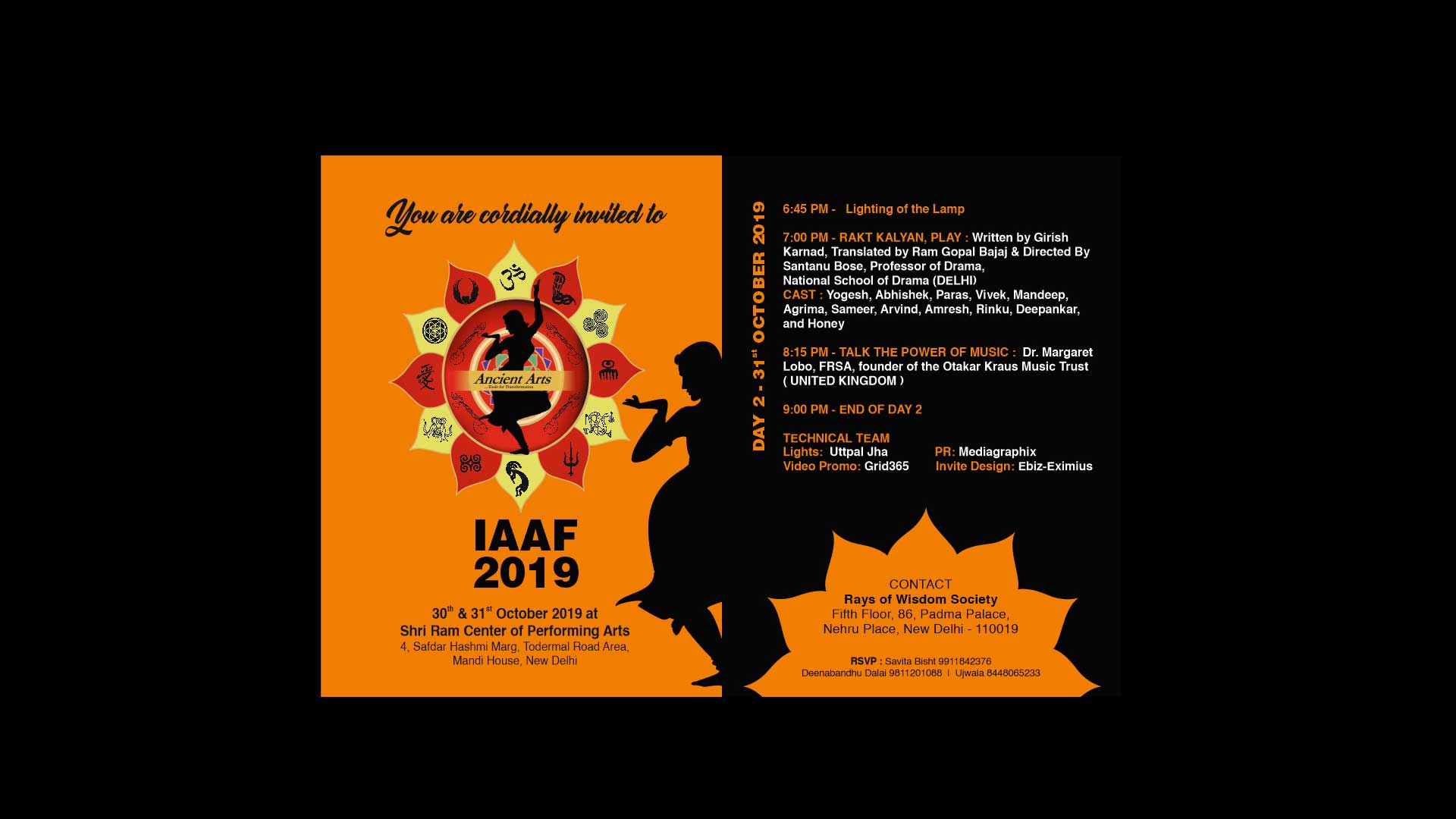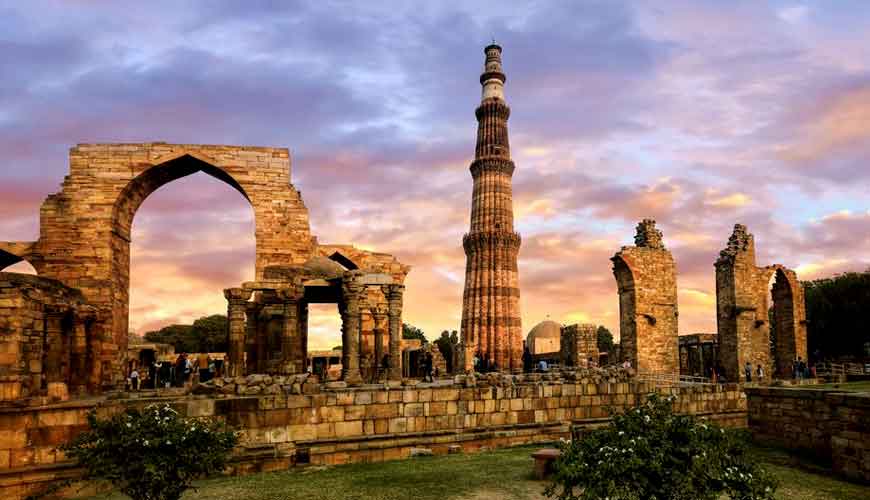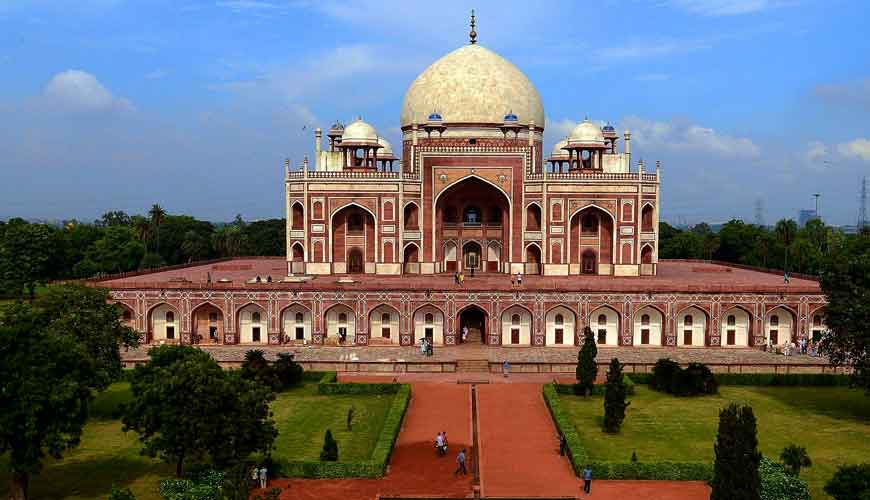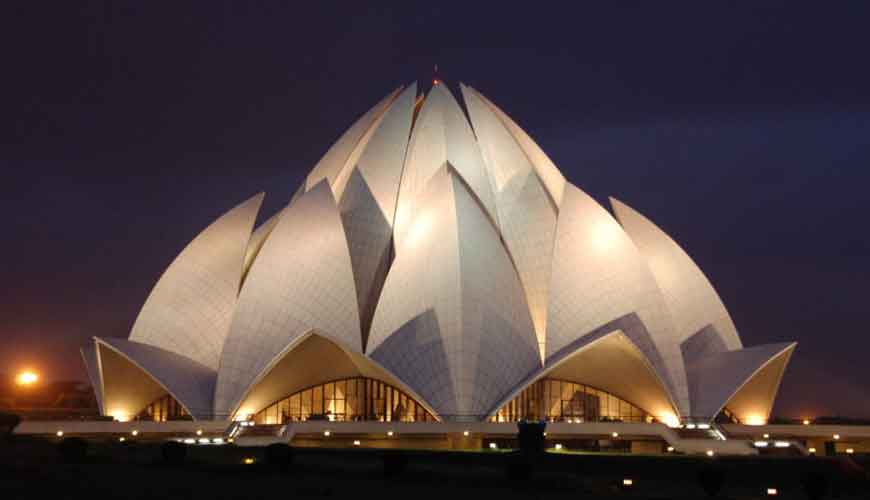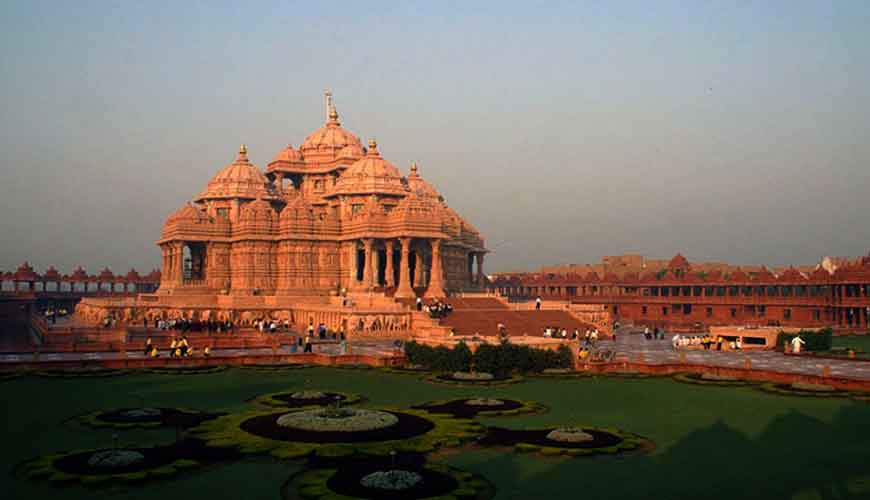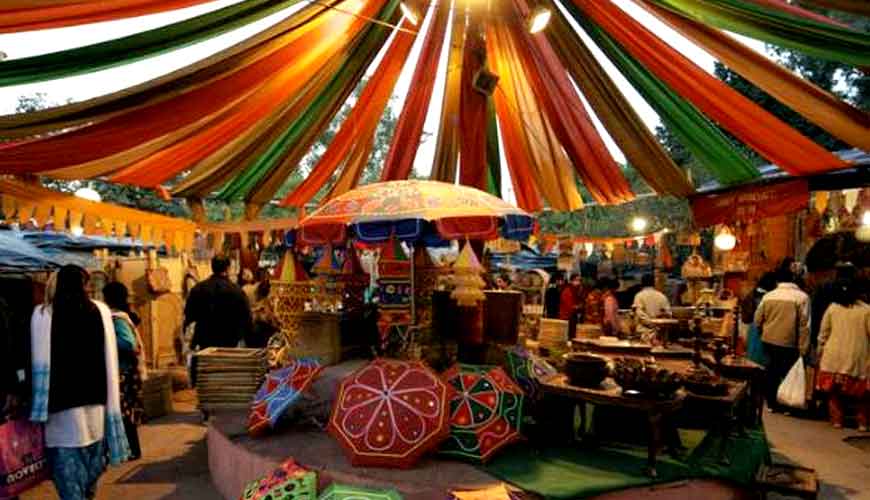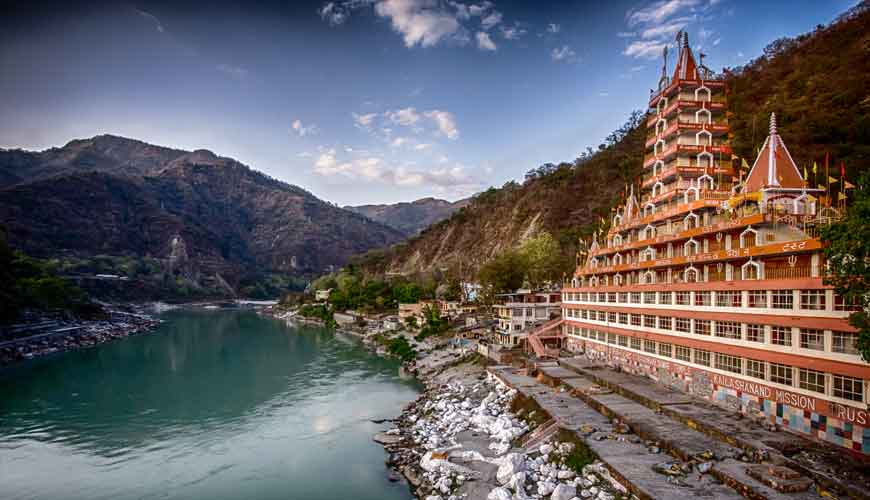UNESCO World Heritage Site
The Qutub Minar, also spelled as Qutb Minar, is a minaret that forms part of the Qutb complex, a UNESCO World Heritage Site in the Mehrauli area of Delhi, India. Qutb Minar is a 73-metre (239.5 feet) tall tapering tower of five storeys, with a 14.3 metres (47 feet) base diameter, reducing to 2.7 metres (9 feet) at the top of the peak. It contains a spiral staircase of 379 steps. Its design is thought to have been based on the Minaret of Jam, in western Afghanistan.
You are cordially invited
ENTRY FREE
Schedule
VENUE
SHRIRAM CENTER OF PERFORMING ARTS
4, Safdar Hashmi Marg, Mandi House, Delhi, India 110001
Website: http://shriramcentre.org
DATES
30th & 31st October 2019
DAY 1: 30th OCTOBER 2019
6.45 PM: Lighting of the Lamp & Address by Chief Guest, Smt Mridula Sinha ji, Hon’ble Governor, Govt of Goa
7.00 PM: ODISSI DANCE ON VEDA by Reela Hota & Group: (DELHI)
7.30 PM: ANCIENT ARTS AWARD PRESENTATION CEREMONY: Guru Geeta Chandran, Bharatnatyam ( DELHI)
7.45 PM: MUSICAL RECITAL Grammy Winner Pandit Vishwa Mohan Bhatt on Mohan Veena (RAJASTHAN) Matthias Mulleron the Guitar (GERMANY)
9:00 PM - End of DAY 1
DAY 2: 31st OCTOBER 2019
7:00 PM - Lighting of the Lamp
7:00 PM - RAKT KALYAN, PLAY : Written by Girish Karnad, Translated by Ram Gopal Bajaj & Directed By Santanu Bose, Professor of Drama, National School of Drama (DELHI) CAST : Yogesh, Abhishek, Paras, Vivek, Mandeep, Agrima, Sameer, Arvind, Amresh, Rinku, Deepankar, and Honey
8.15 PM: TALK THE POWER OF MUSIC: Dr. Margaret Lobo, FRSA, founder of the Otakar Kraus Music Trust ( UNITED KINGDOM )
9:00 PM - End of DAY 2
Technical Team- Lights: Atul Mishra
- PR: Mediagraphix
- Video Promo: Grid365
- Design: Ebiz Eximius Inc.
RSVP : Savita Bisht 9911842376 ; Deenabandhu Dalai 9811201088 ; Ujwala 8448065233
7th INTERNATIONAL ANCIENT ARTS
FESTIVAL /SYMPOSIUM
Healing / Therapy / Cure / Spiritual / Medicine
HEALING THROUGH CREATIVE ARTS ACROSS CULTURES
India’s only multi-arts event of its kind which tries to educate while Entertaining. The Event consists of lectures on the latest research on the therapeutic effect of arts along with artistic performances
Held under the aegis of Rays of Wisdom Society, A Delhi based Cultural NGO, supported by Ministry of Culture, government of India
Rays of Wisdom Society is a charitable organization, committed to establish and propagate the wisdom behind ancient rituals and practices, and help people better themselves physically, mentally, socially and spiritually.
It holds the annual international convention to showcase the shared underlying common of various ancient cultures around the world in the field of dance and music.
The convention also hopes to explore the beautiful connection between performing arts and the world of science Reela Hota is the Founding member/Secretary of Rays of Wisdom Society.

Explore Delhi
Historical Sites / Cultural Places / Popular Places
Qutub Minar
Red Fort
UNESCO World Heritage Site
The Red Fort is a historic fort in the city of Delhi in India. It was the main residence of the emperors of the Mughal dynasty for nearly 200 years, until 1856. It is located in the centre of Delhi and houses a number of museums. In addition to accommodating the emperors and their households, it was the ceremonial and political center of the Mughal state and the setting for events critically impacting the region.
Constructed in 1639 by the fifth Mughal Emperor Shah Jahan as the palace of his fortified capital Shahjahanabad, the Red Fort is named for its massive enclosing walls of red sandstone and is adjacent to the older Salimgarh Fort, built by Islam Shah Suri in 1546 AD. The imperial apartments consist of a row of pavilions, connected by a water channel known as the Stream of Paradise (Nahr-i-Bihisht). The fort complex is considered to represent the zenith of Mughal creativity under Shah Jahan,[citation needed] and although the palace was planned according to Islamic prototypes, each pavilion contains architectural elements typical of Mughal buildings that reflect a fusion of Persian, Timurid and Hindu traditions. The Red Fort's innovative architectural style, including its garden design, influenced later buildings and gardens in Delhi, Rajasthan, Punjab, Kashmir, Braj, Rohilkhand and elsewhere.
The fort was plundered of its artwork and jewels during Nadir Shah's invasion of the Mughal Empire in 1747. Most of the fort's precious marble structures were subsequently destroyed by the British following the Revolt of 1857. The fort's defensive walls were largely spared, and the fortress was subsequently used as a garrison. The Red Fort was also the site where the British put the last Mughal Emperor on trial before exiling him to Yangon in 1858.
Every year on the Independence day of India (15 August), the Prime Minister hoists the Indian "tricolour flag" at the main gate of the fort and delivers a nationally broadcast speech from its ramparts.
Humayun's Tomb
UNESCO World Heritage Site
This is the tomb of the Mughal Emperor Humayun in Delhi, India. The complex encompasses the main tomb of the Emperor Humayun, which houses the graves of Empress Bega Begum , Hamida Begum, and also Dara Shikoh, great-great-grandson of Humayun and son of the later Emperor Shah Jahan, as well as numerous other subsequent Mughals, including Emperor Jahandar Shah, Farrukhsiyar, Rafi Ul-Darjat, Rafi Ud-Daulat, Muhammad Kam Bakhsh and Alamgir II. It represented a leap in Mughal architecture, and together with its accomplished Charbagh garden, typical of Persian gardens, but never seen before in India, it set a precedent for subsequent Mughal architecture. It is seen as a clear departure from the fairly modest mausoleum of his father, the first Mughal Emperor, Babur, called Bagh-e Babur (Gardens of Babur) in Kabul (Afghanistan). Though the latter was the first Emperor to start the tradition of being buried in a paradise garden. Modelled on Gur-e Amir, the tomb of his ancestor and Asia's conqueror Timur in Samarkand, it created a precedent for future Mughal architecture of royal mausolea, which reached its zenith with the Taj Mahal, at Agra.
Lotus Temple
House of Worship
The Lotus Temple, located in Delhi, India, is a Bahá'í House of Worship that was dedicated in December 1986. Notable for its flowerlike shape, it has become a prominent attraction in the city. Like all Bahá'í Houses of Worship, the Lotus Temple is open to all, regardless of religion or any other qualification. The building is composed of 27 free-standing marble-clad "petals" arranged in clusters of three to form nine sides, with nine doors opening onto a central hall with a height of slightly over 34.27metres and a capacity of 2500 people. The Lotus Temple has won numerous architectural awards and has been featured in many newspaper and magazine articles. A 2001 CNN report referred to it as the most visited building in the world.
Akshardham Temple
Hindu cultural complex
'Akshardham' means the divine abode of God. It is hailed as an eternal place of devotion, purity and peace. Akshardham at New Delhi is a Mandir – an abode of God, a Hindu house of worship, and a spiritual and cultural campus dedicated to devotion, learning and harmony. Timeless Hindu spiritual messages, vibrant devotional traditions and ancient architecture all are echoed in its art and architecture.The mandir is a humble tribute to Bhagwan Swaminarayan (1781- 1830), the avatars, devas and great sages of Hinduism. The traditionally-styled complex was inaugurated on 6 November 2005 with the blessings of HH Pramukh Swami Maharaj and through the devoted efforts of skilled artisans and volunteers.
Delhi Haat
Open-air Craft Bazaar cum Food Plaza
The DILLI HAAT provides the ambience of a traditional Rural Haat or village market, but one suited for more contemporary needs. Here one sees a synthesis of crafts, food and cultural activity.
This Food and Craft Bazar is a treasure house of Indian culture, handicrafts and ethnic cuisine, A unique bazaar, in the heart of the city, it displays the richness of Indian culture on a permanent basis.
Step inside the complex for an altogether delightful experience by either buying inimitable ethnic wares, savouring the delicacies of different states or by simply relaxing in the evening with the entire family.
Taj Mahal
UNESCO World Heritage Site
The Taj Mahal, meaning "Crown of the Palaces". is an ivory-white marble mausoleum on the south bank of the Yamuna river in the Indian city of Agra. It was commissioned in 1632 by the Mughal emperor, Shah Jahan (reigned from 1628 to 1658), to house the tomb of his favourite wife, Mumtaz Mahal. It also houses the tomb of Shah Jahan, the builder. The tomb is the centerpiece of a 17-hectare (42-acre) complex, which includes a mosque and a guest house, and is set in formal gardens bounded on three sides by a crenellated wall.
The Taj Mahal was designated as a UNESCO World Heritage Site in 1983 for being "the jewel of Muslim art in India and one of the universally admired masterpieces of the world's heritage". It is regarded by many as the best example of Mughal architecture and a symbol of India's rich history. The Taj Mahal attracts 7–8 million visitors a year and in 2007, it was declared a winner of the New7Wonders of the World (2000–2007) initiative.
Jaipur
The Pink City
Jaipur is Rajasthan’s biggest city and its capital. It is known (somewhat incorrectly) as the Pink City due to the distinct color of its buildings. The ‘pink’ of the Pink City is Gerua (or ochre) in which the city was coated during the visit of the Prince of Wales in 1905-06. Jaipur is known as much for its fascinating monuments and colorful markets as it is for its gorgeous handloom garments and wonderfully laid-out gardens. It is really not very difficult to fall in love with Jaipur the moment you land here. Along with Delhi and Agra, Jaipur forms the Golden Triangle of Indian tourism. Not only does it attract domestic travelers, Jaipur is often an important stopover for foreign tourists. Jaipur also serves as a stepping stone for those who want to travel to the interiors of Rajasthan. Whether it is the majestic Jodhpur or Jaisalmer, the desert city of Rajasthan or quite simply the lesser-known Shekhawati region, Jaipur serves as a starting point for all these places and more.
Rishikesh
Yoga Capital of the World
Rishikesh is a paradise in Uttrakhand state in the form of a small hilly town state known for being a center of meditation and yoga. It is also called the “Yoga Capital of the World” due to various famous yoga retreats and centers within 300 km of Delhi.
Rishikesh is a heady mix of spirituality and nature. Perfect for a backpacking trip out of Delhi, it offers adventure activities like rafting on river Ganges, cliff hanging and trekking to name a few.

